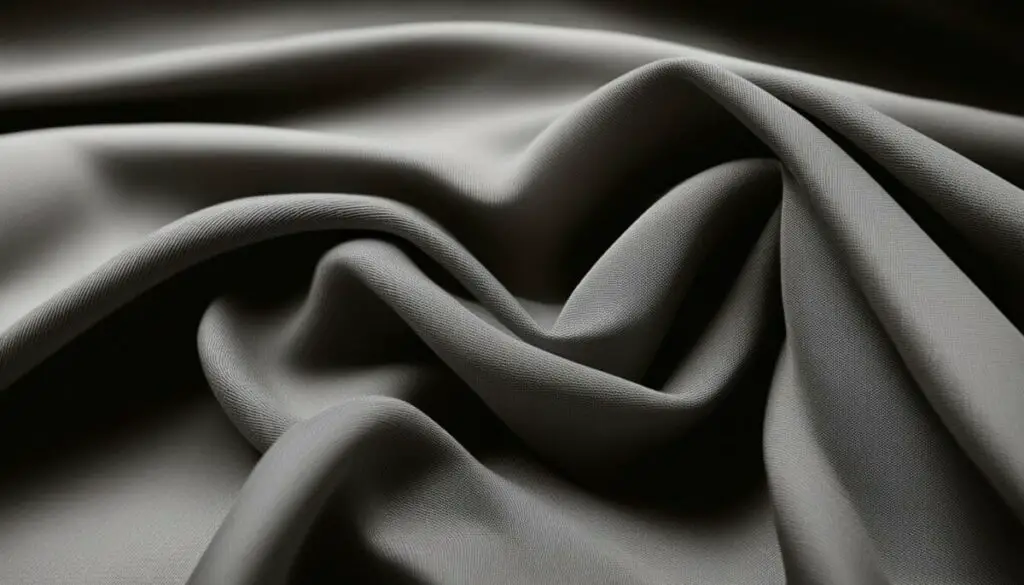Last Updated on 5 months by Francis
When it comes to infrared technology, it’s easy to get swept up in the excitement of its capabilities. From thermal imaging to remote controls, infrared technology plays an instrumental role in our everyday lives. However, a burning question still looms large in the minds of many – does infrared light have the ability to penetrate through clothing?
The answer is not as straightforward as you might think. While certain factors like fabric composition and thickness certainly play a role, the transmission of infrared light through clothing is influenced by a variety of other factors as well. In this article, we’ll explore the intricacies of infrared light and its interaction with clothing, leaving no stone unturned in our quest for the truth.
Contents
Key Takeaways:
- Infrared light penetration through clothing is a complex phenomenon influenced by various factors.
- Fabric composition, thickness, color, and finishes can all impact infrared light transmission.
- Testing methods and equipment play a crucial role in measuring infrared light penetration.
- Infrared technology has practical applications in multiple industries.
- Certain types of personal protective equipment may be effective in shielding individuals from infrared light exposure.
Understanding Infrared Light

Before we explore the complex relationship between infrared light and clothing, it’s crucial to have a solid understanding of infrared light itself. Infrared light is a type of electromagnetic radiation that has a longer wavelength than visible light, making it invisible to the human eye.
Infrared light has the unique ability to penetrate certain materials, including fabrics, to varying degrees. The extent to which infrared light is absorbed or transmitted depends on several factors, including the type of fabric and its thickness.
When infrared light comes into contact with a fabric, it can be either absorbed, reflected, or transmitted through the material. The level of absorption and reflection depends on the color and texture of the fabric, while the degree of transmission is influenced by the composition of the fabric, including its weave and thickness.
When infrared light is transmitted through a material, it can be measured by the percentage of intensity that passes through the fabric. This percentage can be affected by several factors, including the type of infrared light, the wavelength, and the angle at which the light is transmitted through the fabric.
Overall, the interaction between infrared light and fabric is complex and multifaceted. While some materials may allow for high levels of infrared light transmission, others may absorb or reflect the light, making it difficult to penetrate. Understanding these nuances is critical to comprehending the relationship between infrared light and clothing transmission.
The Basics of Clothing and Infrared Light Transmission

It’s a known fact that various clothing materials can act as barriers to infrared light. When it comes to infrared radiation, the ability to penetrate clothing depends on several factors such as wavelength, fabric composition, thickness, and color. Fabric density can also play a role in infrared light transmission through clothing, with thicker fabrics generally offering more resistance to its penetration.
Some fabrics, such as polyester and spandex, can be highly transparent to infrared radiation, allowing it to pass through with ease. Light-colored fabrics also tend to be more penetrable by infrared light than darker ones. This is because lighter colors reflect more visible light, while darker colors absorb more of it, which can lead to higher heat retention and a reduction in infrared light transmission through the material.
Infrared light penetration can also be affected by the way fabrics are treated or finished. For example, fabrics that have been coated or laminated may exhibit different properties than untreated materials, which can impact their transparency to infrared radiation.
Although clothing can act as a barrier to infrared radiation, it’s worth noting that not all fabrics will have the same effect. In some cases, clothing may enhance the transmission of infrared light, depending on the specific fabric and its properties.
It’s also important to consider the effects of clothing on infrared light penetration in various applications. For example, in the medical field, clothing worn by patients can influence the accuracy of thermal imaging tests, as some fabrics may obstruct the detection of subtle temperature variations.
The Role of Fabric Composition in Infrared Light Transmission
The composition of fabrics can greatly impact their transparency to infrared radiation. Synthetic fabrics such as nylon, polyester, and spandex are typically more penetrable by infrared light than natural fibers such as cotton, wool, and silk.
| Fabric Type | Infrared Light Penetration |
|---|---|
| Cotton | Low |
| Wool | Low |
| Silk | Low |
| Nylon | High |
| Polyester | High |
| Spandex | High |
As the table shows, natural fiber fabrics generally offer more resistance to infrared light penetration than synthetic fabrics. This is because natural fibers tend to absorb more infrared radiation, while synthetic fibers are more transparent to it.
The Effects of Clothing Thickness on Infrared Light Penetration

The thickness of clothing can also impact its ability to transmit infrared radiation. Generally, thinner fabrics tend to be more transparent to infrared light than thicker fabrics, which can offer greater resistance to its penetration.
For example, a thin cotton T-shirt may offer little resistance to infrared radiation, while a thick wool sweater may act as a significant barrier to its penetration. The thickness of a fabric can also influence the amount of heat retained by the material, which can affect its transparency to infrared light.
Closing Thoughts
As we’ve discussed, various factors can influence the transmission of infrared light through clothing. While some fabrics may act as barriers to infrared radiation, others may enhance its transmission, depending on the specific properties of the material. Understanding the science behind infrared light and its interaction with clothing is crucial in various industries, from medical diagnostics to thermal imaging applications.
Factors Affecting Infrared Light Penetration

Now that we understand how infrared light interacts with fabric, let’s explore the factors that affect the transmission of infrared light through clothing.
Fabric Composition
The type of fabric plays a significant role in determining how transparent it is to infrared light. Natural fibers, such as cotton and wool, tend to absorb infrared radiation, while synthetic fibers, such as nylon and polyester, are more transparent. The denser the fabric, the less infrared radiation is transmitted.
Fabric Thickness
The thickness of the fabric also plays a role in its transparency to infrared light. Thicker fabrics tend to be less transparent to infrared radiation, as they have more material for the light to pass through.
Color
The color of the fabric can also influence its transparency to infrared light. Dark colors tend to absorb more infrared radiation than lighter colors, making them less transparent. This is because dark colors absorb more light, which causes an increase in temperature and energy.
Treatments and Finishes
Certain treatments or finishes applied to fabrics can also affect their transparency to infrared light. For example, metal coatings or laminates can reflect and block infrared radiation, while water-resistant finishes can reduce fabric breathability and increase its thickness, thereby reducing infrared radiation transmission.
Now that we’ve explored the various factors that affect the transmission of infrared light through clothing, let’s move on to the methods used to test the opacity of clothing to infrared radiation.
Testing Infrared Light Penetration

Measuring the opacity of clothing to infrared light requires specialized equipment and techniques. The emissivity of a material, which determines how much infrared radiation it can absorb and emit, is a crucial factor in these tests. The lower the emissivity, the higher the material’s transparency to infrared light.
Several methods are used to perform these measurements, including contact thermometry, infrared thermography, and spectroscopy. Contact thermometry involves placing a temperature probe between the skin and the clothing and measuring the temperature difference over time. Infrared thermography uses a camera to capture images of the temperature patterns on the surface of the skin and clothing, while spectroscopy analyzes the absorption and reflection of infrared light at different wavelengths.
The results of these tests can provide valuable insights into the effectiveness of clothing as a barrier to infrared radiation. For example, military personnel depend on infrared-resistant uniforms to protect them from enemy thermal imaging technology. The testing of these materials is critical to ensure their functionality in real-world scenarios.
In addition to testing the opacity of clothing to infrared light, it’s essential to consider the conditions under which these tests are performed. Environmental factors such as humidity, temperature, and air movement can affect the accuracy of measurements. Therefore, researchers must control these variables carefully to obtain reliable and repeatable results.
Real-World Applications of Infrared Light

While the question of whether infrared light can penetrate clothing has captured the public’s imagination, the applications of infrared technology are numerous and diverse. Infrared radiation is used in a variety of industries and areas of study, from military and aerospace to medicine and environmental science.
One of the most significant uses of infrared technology is in thermal imaging cameras, which can capture images based on heat energy emitted by objects. This allows for the detection of objects or individuals in total darkness or low light conditions. Law enforcement agencies, military units, and firefighters often use thermal imaging cameras to aid in their work.
Medical professionals also rely on infrared technology for various diagnostics. Infrared imaging can detect temperature changes in the body, which can indicate the presence of injuries or inflammation. Additionally, infrared therapy has been used to promote healing and manage pain in certain conditions.
Environmental scientists use infrared radiation to study Earth’s atmosphere and climate patterns. Satellites equipped with infrared sensors can measure temperature changes, precipitation levels, and other vital data that help scientists understand and predict weather patterns.
“Infrared technology has revolutionized many aspects of science and industry, from improving our ability to see in the dark to aiding in medical diagnoses. Its influence will undoubtedly continue to expand in the years to come.”
Infrared Light and Personal Protective Equipment

When it comes to protecting workers from potential harm caused by infrared light exposure, personal protective equipment (PPE) is essential. This type of gear is designed to shield the wearer from thermal and radiation hazards, including infrared radiation.
Heat-resistant clothing, in particular, is a popular form of PPE for workers in industries such as firefighting, welding, and glass manufacturing. This clothing is typically made from flame-resistant materials that can withstand high temperatures and prevent burns from infrared radiation.
However, not all PPE is created equal, and some may not provide adequate protection against infrared light. For instance, regular clothing may not be sufficient in blocking infrared radiation, especially if it’s made from materials that are highly transparent to infrared light.
That’s why it’s crucial for workers and employers to select PPE that’s specifically designed to shield against infrared radiation. The Occupational Safety and Health Administration (OSHA) provides guidelines and regulations on proper PPE selection and use, so it’s essential to follow these guidelines to ensure worker safety.
Comparing PPE Effectiveness
Table: Comparison of PPE Effectiveness Against Infrared Radiation
| PPE Type | Effectiveness Against Infrared Radiation |
|---|---|
| Heat-resistant clothing made from flame-resistant materials | Highly effective in blocking infrared radiation |
| Regular clothing made from non-flame-resistant materials | Not effective in blocking infrared radiation |
| Sunscreen or sunblock lotion | Some protection against infrared radiation, but limited effectiveness |
| Infrared-blocking face shields or goggles | Highly effective in blocking infrared radiation to the eyes and face |
As shown in the table, heat-resistant clothing made from flame-resistant materials is highly effective in blocking infrared radiation. In contrast, regular clothing made from non-flame-resistant materials does not offer adequate protection against infrared radiation. Sunscreen or sunblock lotion may provide some protection, but their effectiveness is limited. Infrared-blocking face shields or goggles are highly effective in shielding the eyes and face from infrared radiation.
It’s worth noting that some PPE may hinder mobility or cause discomfort, making it crucial to choose gear that balances safety and functionality. Additionally, it’s important to ensure that PPE is well-maintained and regularly checked for defects or damage.
By selecting the appropriate PPE and following OSHA guidelines, workers and employers can minimize the risk of infrared radiation exposure and protect themselves from potential harm.
Advances in Infrared-Resistant Fabrics
As technology continues to advance, so does the development of fabrics that can protect individuals from infrared radiation exposure. These innovative materials are utilized in a variety of industries, including firefighting, military, and aerospace.
Fabrics that are able to block or reduce infrared light transmission often incorporate advanced materials such as ceramic fibers, metallic coatings, and carbon nanotubes. These specialized fabrics can provide effective protection while maintaining comfort, flexibility, and breathability.
Comparing Infrared Protection of Different Fabrics
| Material | Infrared Protection | Comfort | Cost |
|---|---|---|---|
| Nomex | Excellent | Good | High |
| Kevlar | Good | Poor | High |
| Carbon Nanotube Fabrics | Excellent | Excellent | Very High |
It’s important to note that the effectiveness of infrared-resistant fabrics can be influenced by a variety of factors, including fabric thickness and color. In addition, it’s essential to choose the right fabric for the specific application to ensure optimal protection.
Overall, advances in infrared-resistant fabrics have paved the way for safer and more effective personal protective equipment. As technology continues to progress, we can expect to see even more innovations in this field, further enhancing the protection of individuals in high-risk occupations.
The Influence of Clothing on Infrared Light Emission
While the previous sections have primarily focused on how clothing affects the transmission of infrared light, it’s also worth considering the impact clothing has on the emission of infrared radiation.
“The type of fabric and color of clothing worn affects how much infrared radiation is emitted or absorbed by the body. Clothing made from highly reflective fabrics or bright colors reflects more infrared radiation than dark colors [1].”
This quote highlights an important point – the color and reflectivity of clothing can significantly influence the emission of infrared radiation. Darker fabrics tend to absorb more infrared radiation, while lighter colors reflect more radiation. This can impact the accuracy of thermal imaging devices, for example, as the emitted radiation can be absorbed or reflected by clothing and result in an inaccurate reading.
Additionally, the thickness and composition of clothing can affect the emission of infrared radiation. Thicker fabrics may obstruct the natural emission of radiation, while materials such as wool and silk are known to emit infrared radiation on their own [2].
In certain applications, such as in medical diagnoses or military surveillance, the influence of clothing on infrared light emission is a crucial factor to consider. Proper training and education on how clothing can impact infrared radiation detection is necessary to ensure accurate readings and interpretations.
Overall, while clothing may not directly emit infrared radiation, its properties can significantly impact the natural emission from the body. Awareness of these factors is important in various fields where infrared technology is utilized, to ensure accurate and meaningful results.
References:
- U.S. Army Public Health Center. (2015). Infrared Radiation Exposure: Types of clothing and sun exposure. Retrieved from https://phc.amedd.army.mil/PHC%20Resource%20Library/Infrared%20Radiation%20Exposure_Types%20of%20Clothing_Sun%20Exposure_2015.pdf
- Journal of Textile Science and Engineering. (2016). Textile Science & Engineering: Infrared Radiation Properties of Textile Materials. Retrieved from https://www.longdom.org/open-access/infrared-radiation-properties-of-textile-materials-legacy-of-manymillennia-of-innovation-2375-446X-1000132.pdf
Conclusion
After a deep dive into the world of infrared technology and clothing, we have come to a conclusive answer to the question – does infrared light penetrate clothing?
The answer is yes, but to varying degrees depending on the type of fabric, its thickness, color, and any treatments it may have undergone. Infrared light can penetrate through many types of clothing, including thin fabrics like cotton and polyester. However, thicker and darker colored fabrics provide more resistance to infrared light penetration.
It’s important to note that personal protective equipment, such as heat-resistant clothing, can provide a barrier against infrared light exposure. Advances in technology have also led to the development of infrared-resistant fabrics that can block or reduce infrared light penetration.
As we continue to learn about the fascinating properties of infrared light, it’s essential to consider the impact of clothing on its transmission and emission. By understanding how different fabrics affect infrared light, we can make informed decisions about protective equipment and the ability to detect infrared radiation in various applications.
Thank you for joining us on this journey to unveil the truth behind infrared light and clothing. We hope this article has provided valuable insights and enhanced your understanding of this intriguing phenomenon.
FAQ
Does infrared light penetrate clothing?
Yes, infrared light can penetrate certain types of clothing depending on factors such as fabric composition, thickness, and color.
How does infrared light pass through clothes?
Infrared light passes through clothes by either being transmitted, absorbed, or reflected by the fabric. Certain fabrics allow more infrared light to pass through, while others block or absorb it.
What factors affect infrared light penetration through clothing?
The factors that affect infrared light penetration through clothing include fabric composition, thickness, color, and any treatments or finishes applied to the fabric.
How can you test infrared light penetration through clothing?
Infrared light penetration through clothing can be tested using specialized equipment and methods such as spectrophotometers and thermal imaging cameras. Variables such as fabric type, thickness, and temperature can also be controlled during testing.
What are the real-world applications of infrared light?
Infrared light has various practical applications in industries such as thermal imaging, medical diagnostics, security systems, and more. It is used to detect heat signatures, monitor body temperature, and identify potential hazards.
How effective is personal protective equipment in shielding individuals from infrared light exposure?
Personal protective equipment, such as heat-resistant clothing, plays a crucial role in shielding individuals from infrared light exposure in professions where it is a potential hazard. The effectiveness of different types of PPE may vary depending on the specific requirements and standards.
Are there advances in fabrics that can block or reduce infrared light penetration?
Yes, advances in technology have led to the development of fabrics that can block or reduce infrared light penetration. These infrared-resistant fabrics are designed to provide enhanced protection and are used in various applications such as military gear, firefighting suits, and industrial clothing.
How does clothing influence the emission of infrared light?
Clothing can influence the emission of infrared light by either enhancing or hindering its detection. Certain fabrics can enhance the emission or reflection of infrared radiation, making it easier to detect and analyze in specific scenarios.








